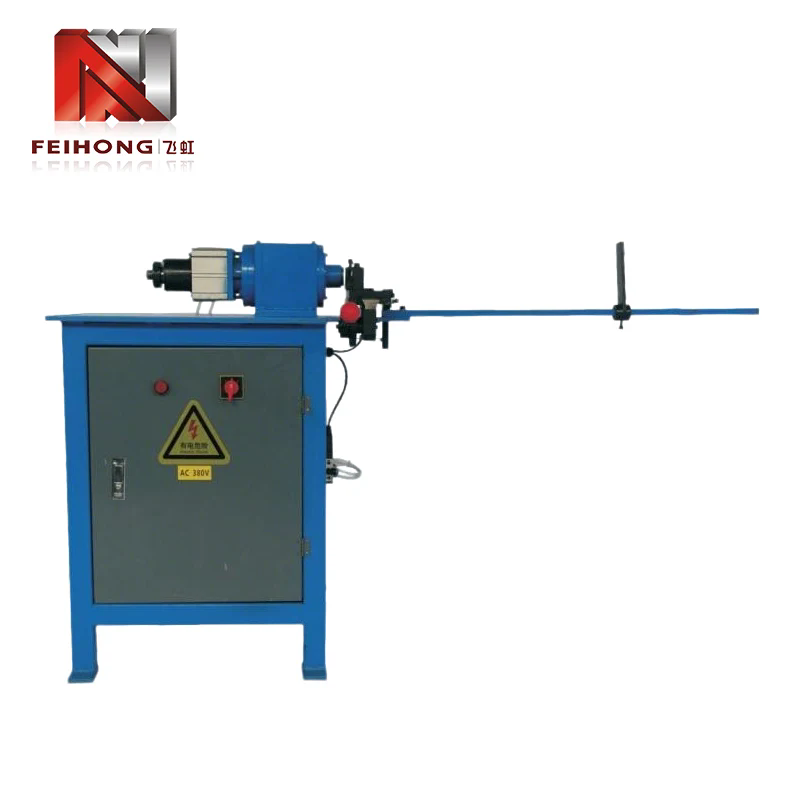What Is a Manual Pipe Cutting Machine?
2025-08-25
A Manual Pipe Cutting Machine is a precision tool designed to cut pipes of various materials, such as steel, stainless steel, copper, aluminum, and PVC, without relying on complex automation systems. Unlike fully automated cutting equipment, manual machines offer greater control, portability, and affordability, making them the go-to choice for professionals in plumbing, construction, HVAC, manufacturing, and shipbuilding.
These machines work on simple yet efficient mechanical principles, typically using a hand-operated lever or rotary handle to control the cutting blade. They are built to deliver accurate cuts while minimizing material waste and operator fatigue. Despite being manually operated, modern designs integrate advanced engineering, ensuring clean, burr-free finishes that meet industry quality standards.
Key Features of a Manual Pipe Cutting Machine
-
Portability – Compact and lightweight, ideal for on-site or workshop use.
-
Precision Cutting – Provides clean and accurate cuts with minimal deformation.
-
Material Versatility – Works effectively on metals, plastics, and composite pipes.
-
Durability – Built from high-grade steel and engineered components for long-term reliability.
-
Cost-Effectiveness – A budget-friendly solution compared to automatic machines.
Why Choose a Manual Pipe Cutting Machine Over Automated Alternatives
Many professionals face a common dilemma: manual vs. automatic pipe cutting machines. While automated systems deliver higher throughput, they are expensive, less portable, and require skilled operators. In contrast, a Manual Pipe Cutting Machine provides an excellent balance between cost, efficiency, and ease of use, especially for small to medium-scale projects.
Advantages of Manual Pipe Cutting Machines
| Feature | Manual Pipe Cutting Machine | Automatic Pipe Cutting Machine |
|---|---|---|
| Initial Cost | Low to moderate | High investment required |
| Portability | Lightweight and easy to transport | Heavy and mostly stationary |
| Ease of Use | Simple, intuitive operation | Requires skilled technicians |
| Maintenance | Minimal, low-cost upkeep | Regular and expensive servicing |
| Applications | Ideal for on-site and workshop use | Suitable for large-scale production |
Manual solutions are particularly popular in industries where flexibility is essential. For example:
-
Plumbing and HVAC specialists prefer them for cutting pipes on-site in confined spaces.
-
Construction workers benefit from their ruggedness and reliability under tough conditions.
-
Small manufacturers choose manual machines as a cost-effective entry point for precision cutting.
Technical Specifications and Product Parameters
To choose the right Manual Pipe Cutting Machine, understanding its technical parameters is critical. Below is a detailed overview of common specifications for Feihong’s professional-grade models:
| Model | Cutting Range | Compatible Materials | Blade Type | Cutting Speed | Weight | Special Features |
|---|---|---|---|---|---|---|
| FH-MPCM150 | 6–150 mm | Steel, stainless steel, PVC | Alloy steel blade | Manual adjustable | 6.5 kg | Compact portable design |
| FH-MPCM250 | 20–250 mm | Copper, aluminum, carbon steel | Hardened rotary wheel | Manual lever control | 8.2 kg | Anti-slip ergonomic handle |
| FH-MPCM400 | 50–400 mm | Stainless steel, cast iron | High-tensile cutter | Precision-guided | 12.4 kg | Burr-free cutting finish |
These specifications demonstrate Feihong’s focus on high performance, durability, and operator comfort. Whether cutting small copper tubes or large-diameter steel pipes, there’s a model tailored to meet diverse industrial demands.
Applications, Maintenance Tips, and Buying Guide
A Manual Pipe Cutting Machine is widely used across multiple industries due to its versatility and reliability. Understanding where and how to use it can maximize productivity and extend its lifespan.
Common Applications
-
Plumbing Systems: Cutting water, gas, and drainage pipes to exact lengths.
-
HVAC Installations: Preparing ducts and tubes for heating and cooling systems.
-
Metal Fabrication: Accurate cutting for frames, supports, and welded structures.
-
Shipbuilding: Handling specialized pipes in constrained shipyard environments.
-
Automotive Repair: Trimming exhaust pipes, fuel lines, and custom metalwork.
Maintenance Tips for Optimal Performance
To ensure consistent cutting accuracy and long-lasting durability:
-
Clean After Use: Remove debris and dust from the blade and housing.
-
Lubricate Moving Parts: Apply oil to rotary wheels and bearings for smooth operation.
-
Inspect Blades Regularly: Replace dull or damaged cutting wheels immediately.
-
Store in a Dry Environment: Protect against rust and corrosion.
-
Check Alignment: Ensure the cutting blade remains centered for uniform results.
Manual Pipe Cutting Machine – FAQ
Q1: How do I ensure a straight and clean cut when using a Manual Pipe Cutting Machine?
A1: To achieve precise results, first secure the pipe firmly in the machine’s clamp. Rotate the cutting handle gradually and evenly, applying steady pressure. Avoid forcing the blade through the pipe too quickly, as this can cause uneven edges. Always make multiple passes rather than attempting to cut through in a single motion.
Q2: What types of pipes can a Manual Pipe Cutting Machine handle?
A2: High-quality models, like those from Feihong, are engineered to cut a variety of materials, including stainless steel, carbon steel, copper, aluminum, PVC, and cast iron. However, selecting the correct blade type and machine model ensures better results and extends the blade’s lifespan.
Why Choose Feihong’s Manual Pipe Cutting Machines
Feihong has built a reputation as a trusted manufacturer of high-performance Manual Pipe Cutting Machines designed for both professionals and industrial applications. With ergonomic designs, precision cutting capabilities, and superior durability, Feihong machines provide a reliable solution for any project where accuracy and efficiency matter.
If you’re looking for a cost-effective, reliable, and versatile pipe-cutting solution, Feihong has a full range of models to meet your needs.
Contact us today to learn more about our products, request a quote, or discuss custom solutions for your specific application.



